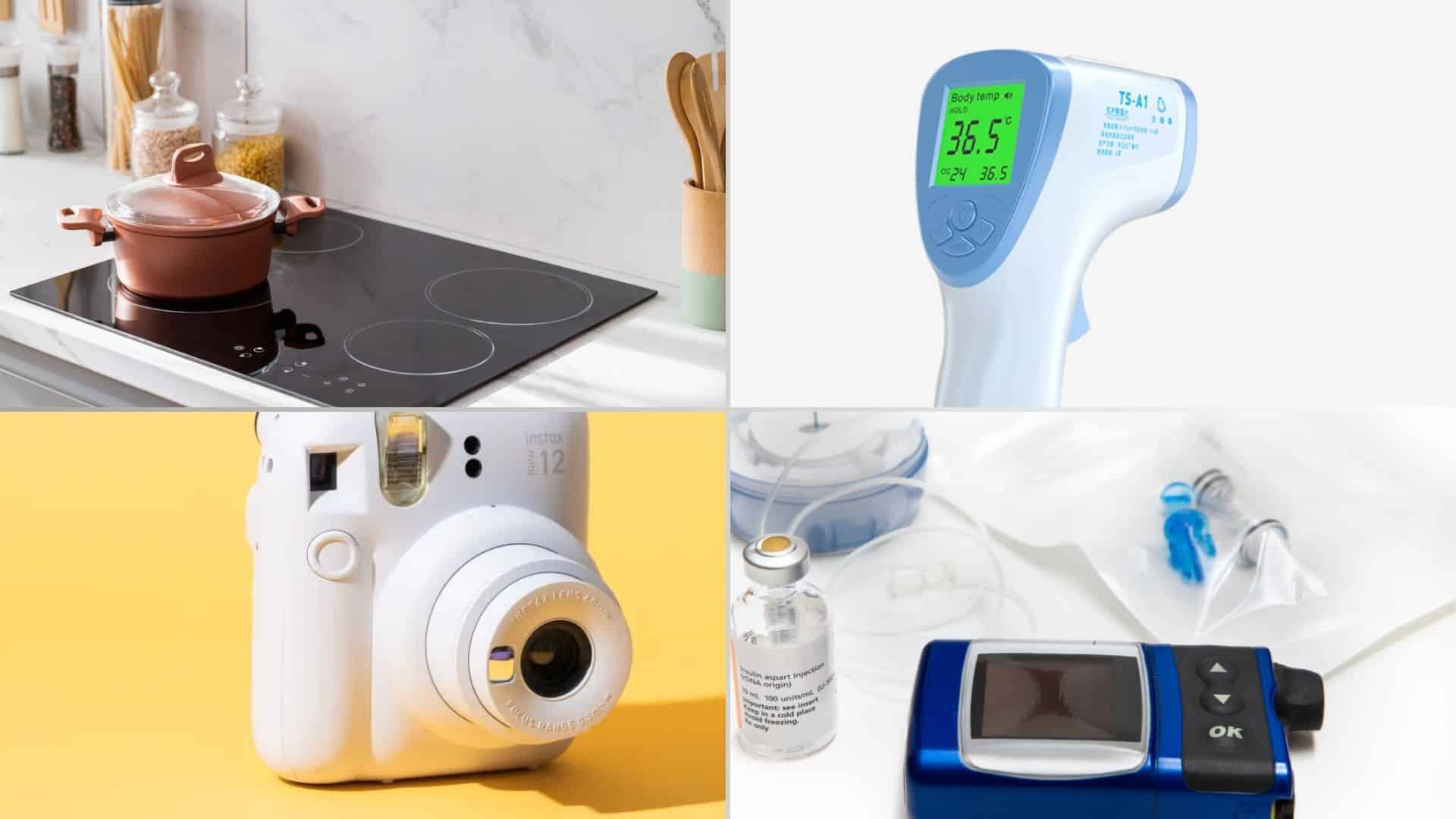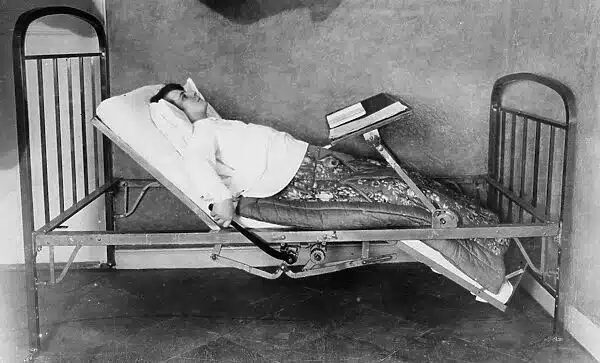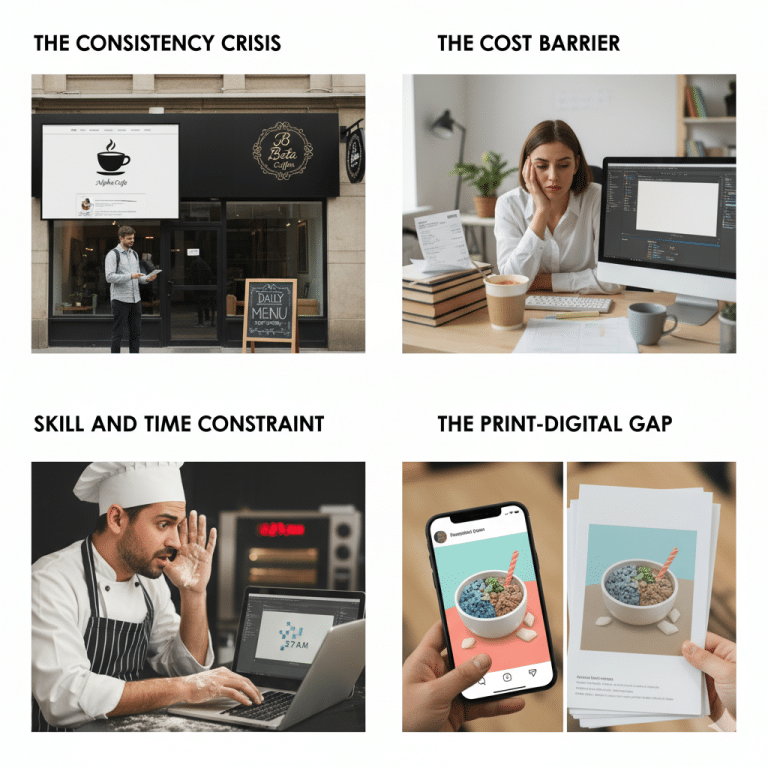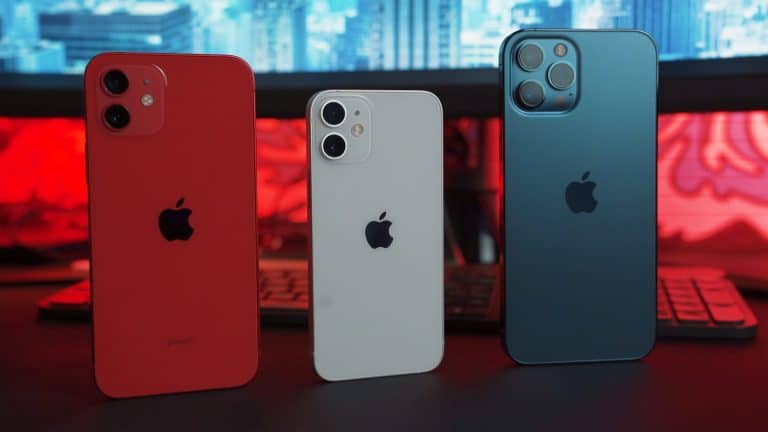The Top ‘I’ Letter Inventions: A Showcase of Innovation
The world of inventions is vast and ever-changing, with new ideas constantly shaping our daily lives—however, inventions starting with the letter “I” have made significant contributions to various fields.
These creations have left their mark on society, from everyday items to specialized tools. This blog post will explore some of the most notable “I” inventions that have changed our lives and work.
You’ll learn about clever solutions to common problems and tools that have improved specific industries.
Get ready to explore a range of impressive inventions, from kitchen appliances to industrial equipment.
Top ‘I’ Letter Inventions
1. Infrared Thermometer
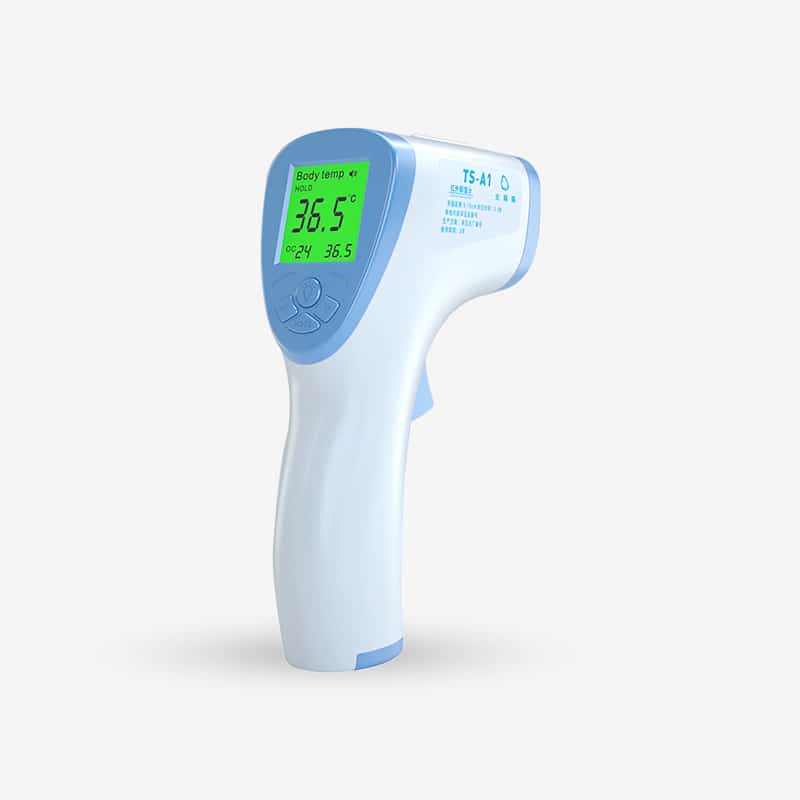
This clever device measures temperature without touching, using infrared radiation. It’s become a common sight in hospitals and clinics for quick, hygienic temperature checks.
But its use goes beyond medicine. In factories, it helps check equipment temperatures safely. Even in homes, people use it to find heat leaks or check food temperatures.
Its ability to measure heat from a distance has made it valuable in many fields.
| Model | Invented Date/Year |
|---|---|
| Medical Use | 1967 |
| Industrial Use | 1967 |
| Home Use | 1990s |
2. Inkjet Printer
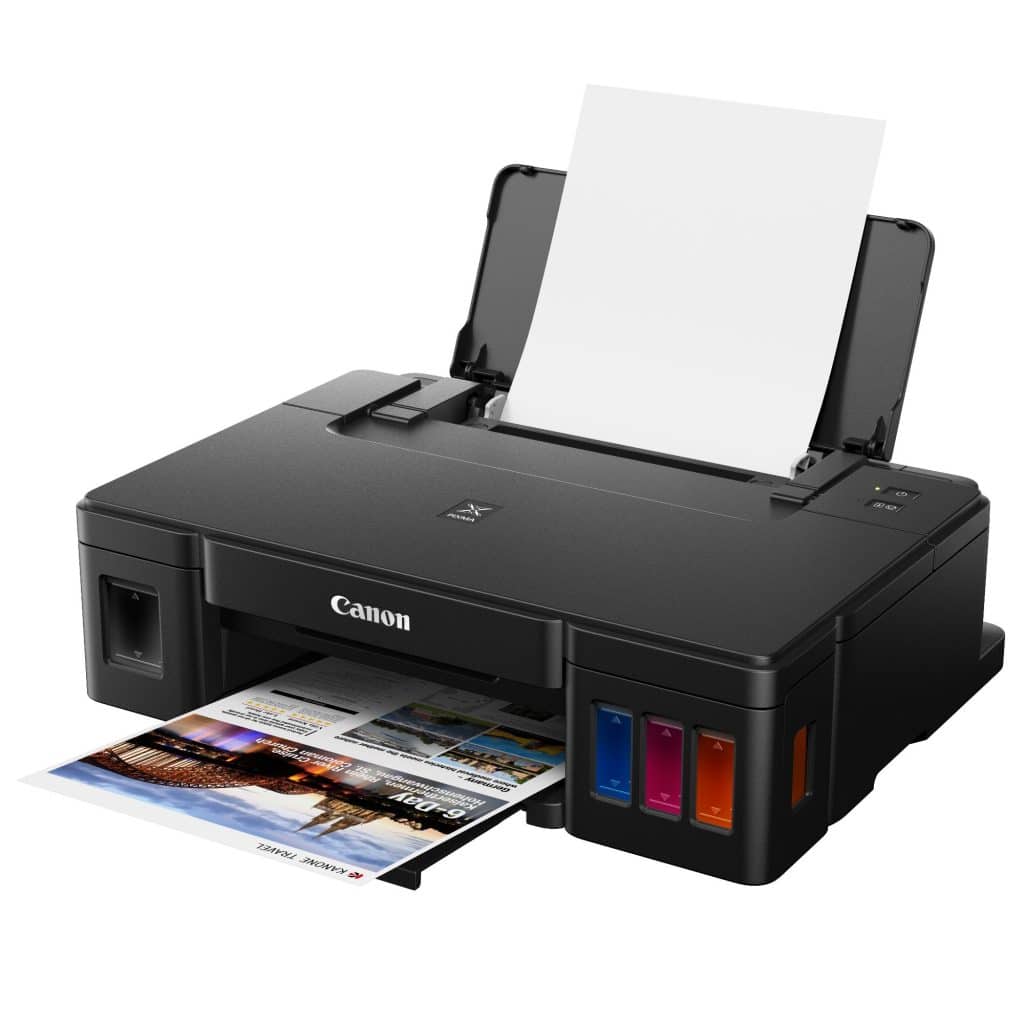
These printers have revolutionized how we put words and images on paper. They create crisp text and vibrant images by spraying tiny droplets of ink.
They’ve made anyone able to print professional-looking documents and photos at home. In offices, they’ve sped up work and added color to presentations.
Inkjet technology has also been useful in unexpected places, such as printing electronic circuits or food decorations.
| Model | Invented Date/Year |
|---|---|
| Thermal Inkjet Printer | 1979 |
| Piezoelectric Inkjet Printer | 1976 |
| Continuous Inkjet Printer | 1951 |
3. Interactive Whiteboard

This digital board has transformed classrooms and meeting rooms. It combines the simplicity of a traditional whiteboard with the power of a computer.
Teachers use it to make lessons more engaging, showing videos or interactive diagrams. In businesses, it’s great for brainstorming sessions, allowing ideas to be saved and shared easily.
Some advanced models even let people in different locations collaborate as if they were in the same room.
| Model | Invented Date/Year |
|---|---|
| Analog Interactive Whiteboard | 1991 |
| Digital Interactive Whiteboard | 1999 |
| Touch-sensitive Interactive Whiteboard | 2003 |
4. Internet Router
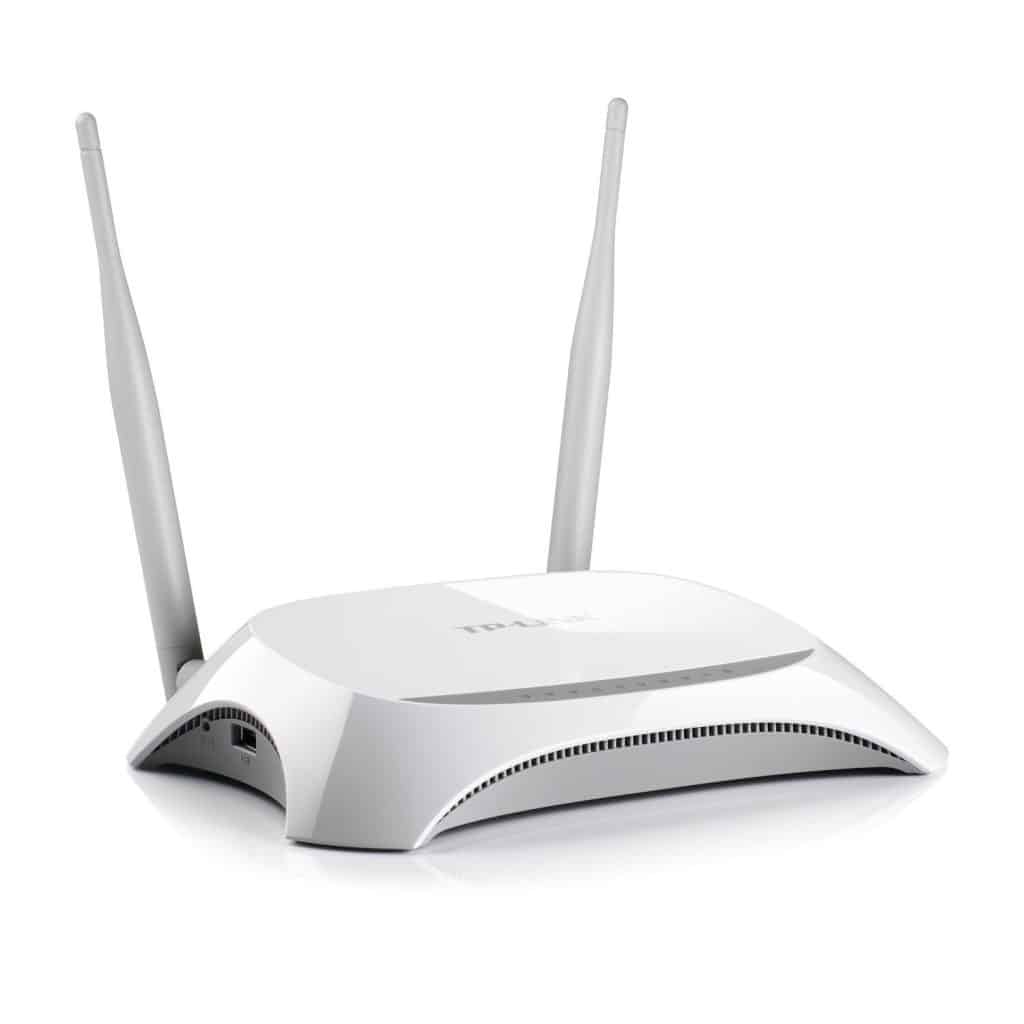
This small box is the unsung hero of our connected world. It directs data traffic, ensuring our emails, videos, and web searches find their way.
Without routers, the internet wouldn’t work as we know it. They’ve evolved to do more than connect us to the internet.
Modern routers often include security features to protect our networks and can prioritize traffic for smoother streaming or gaming.
| Model | Invented Date/Year |
|---|---|
| Wired Router | 1980s |
| Wireless Router | 1999 |
| Mesh Router | 2016 |
5. Ion Exchange Resin

This material might not be well-known, but its impact is huge. It’s the secret behind many water purification systems.
It softens water in homes, making it better for skin and appliances. In industry, it helps create ultra-pure water for electronics manufacturing.
Even in medicine, it’s used to purify drugs. Its ability to selectively remove ions from solutions has made it invaluable in many processes we rely on daily.
| Model | Invented Date/Year |
|---|---|
| Cation Exchange Resin | 1935 |
| Anion Exchange Resin | 1935 |
| Mixed Bed Resin | 1944 |
6. Insulin Pump
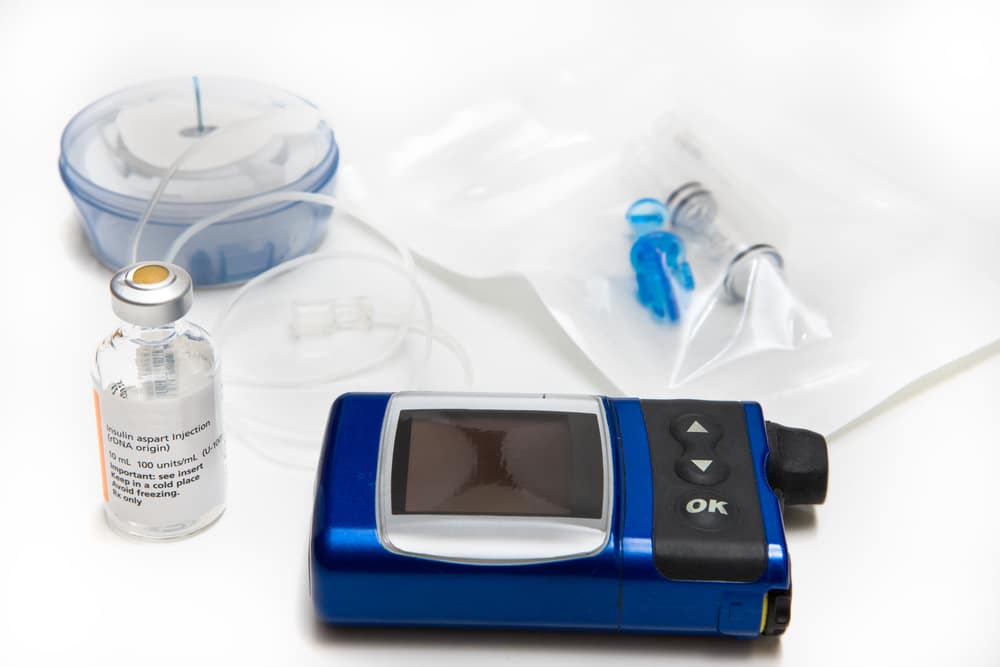
This medical device has been a game-changer for many people with diabetes. It delivers insulin continuously, mimicking the body’s natural process more closely than injections.
Users can easily adjust their insulin doses, giving them more freedom in their daily lives.
The pump has reduced the need for multiple daily injections, making diabetes management less intrusive.
Some modern pumps even work with glucose monitors to automatically adjust insulin levels, bringing us closer to an artificial pancreas.
| Model | Invented Date/Year |
|---|---|
| Tubed Insulin Pump | 1976 |
| Tubeless Insulin Pump | 2005 |
| Closed-loop Insulin Pump | 2013 |
7. Instant Camera
These fun devices bring back the magic of physical photographs in our digital age.
They produce printed photos moments after taking the picture, perfect for parties or spontaneous moments.
While smartphones have largely replaced instant cameras for everyday use, they have found a new life among photography enthusiasts and artists.
They’re valued for their unique, often slightly imperfect images that have a charm digital photos can’t replicate.
| Model | Invented Date/Year |
|---|---|
| Polaroid Camera | 1948 |
| Fujifilm Instax | 1998 |
8. Image Recognition Software
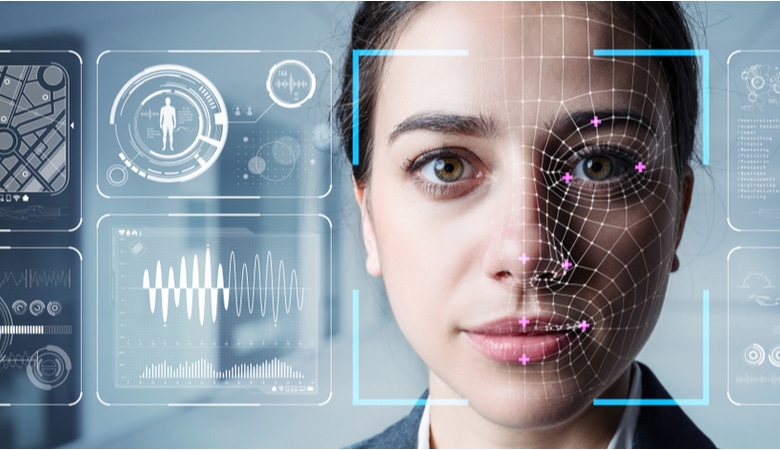
This technology is becoming increasingly prevalent in our daily lives. It’s what allows our phones to recognize faces in photos or social media to suggest tags for friends.
In retail, it’s used for everything from self-checkout kiosks to analyzing customer behavior in stores.
As the software improves, it’s finding new applications, from helping visually impaired people navigate to assisting in medical diagnoses.
| Model | Invented Date/Year |
|---|---|
| Facial Recognition Software | 1960s (concept) |
| Object Recognition Software | 1980s |
| Optical Character Recognition (OCR) | The 1920s (concept) |
9. Insulated Glass
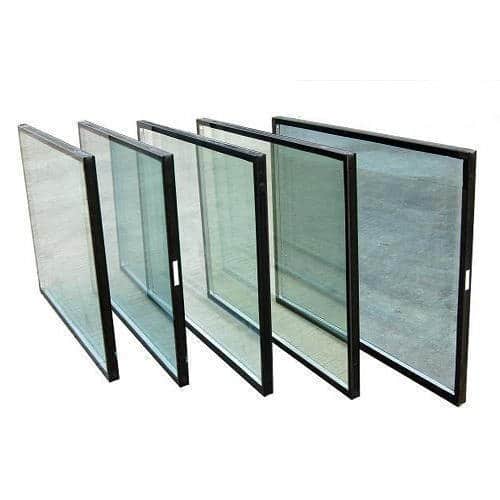
This type of glass has made our buildings more comfortable and energy-efficient. By trapping air or gas between panes, it significantly reduces heat transfer.
This means less energy is needed to heat or cool buildings, reducing costs and environmental impact.
It also helps reduce outside noise, making homes and offices quieter. In cold climates, it prevents condensation on windows, while in hot climates, it keeps the heat out.
| Model | Invented Date/Year |
|---|---|
| Double Glazing | 1940s |
| Triple Glazing | 1970s |
10. Induction Stove
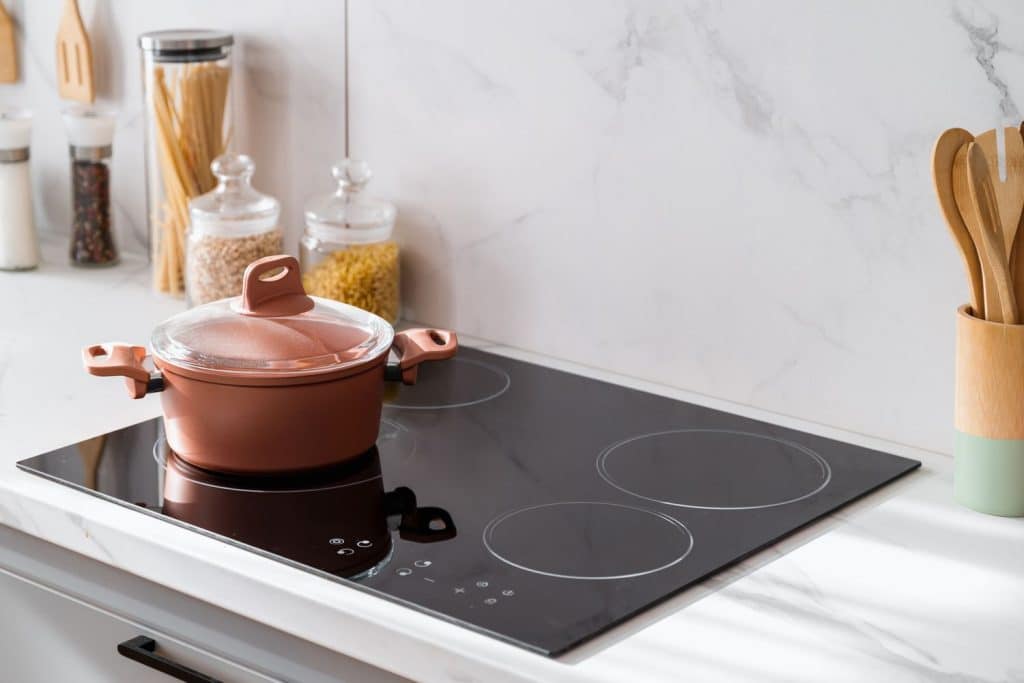
These modern cooktops are changing how we think about cooking. They use electromagnetic fields to heat pots and pans directly, making them faster and more energy-efficient than gas or traditional electric stoves.
They’re also safer, as the cooktop doesn’t get hot. This technology allows for precise temperature control, which is great for delicate cooking tasks.
As people become more energy-conscious, induction stoves are gaining popularity in home and professional kitchens.
| Model | Invented Date/Year |
|---|---|
| Early Induction Stoves | 1970s |
| Modern Induction Stoves | 2000s |
11. Ice Breaking Boat

Ice-breaking boats are special ships built to sail through ice-covered waters.
Their strong hulls and powerful engines allow them to break through thick ice.
These boats have made a big difference in sea travel. Now, ships can move through polar areas all year round.
This has helped scientists study these regions and allowed more trade ships to use these routes.
| Model | Invented Date/Year |
|---|---|
| Early Ice Breakers | 1837 |
| Modern Ice Breakers | 1950s |
12. Ice Cream Freezer
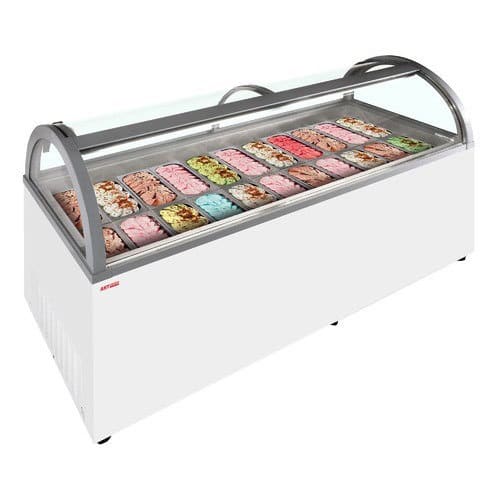
Ice cream freezers have changed a lot over time. The first ones were hand-cranked, and people had to turn a handle to make ice cream.
Now, we have electric freezers that do the work for us. They come in different sizes, from small ones for home use to big ones for ice cream shops.
These freezers have made a big impact on how we enjoy ice cream. They made it easier and cheaper to make ice cream so more people could have it.
Today, ice cream freezers are still very important in making all kinds of frozen treats.
| Model | Invented Date/Year |
|---|---|
| Hand-cranked Freezer | 1843 |
| Electric Freezer | 1920s |
13. Ice Clog
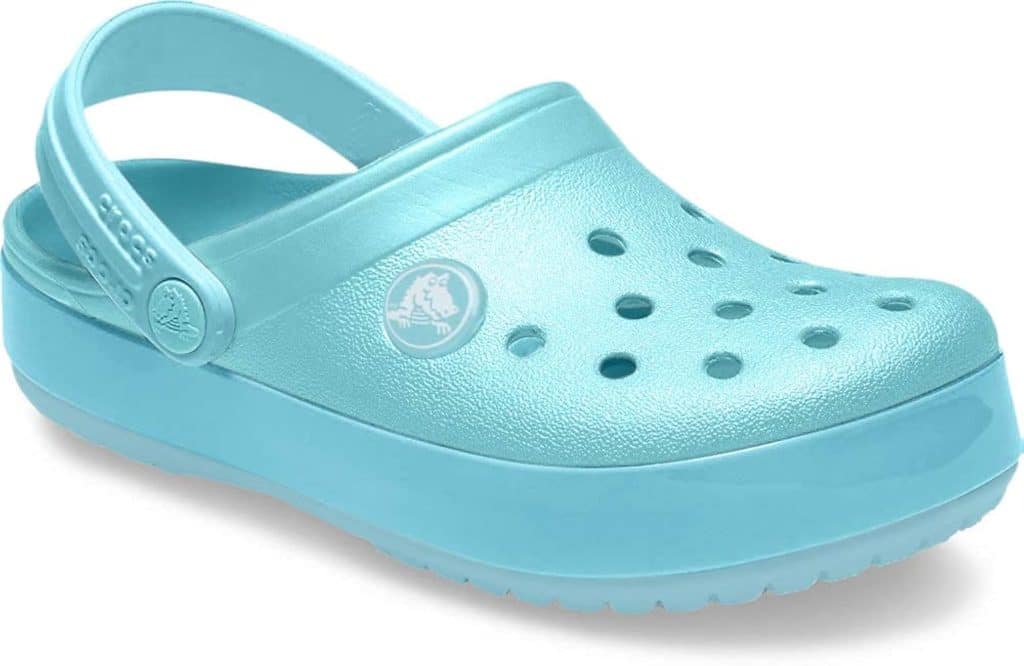
Ice clogs are special shoes that help people walk on ice without slipping. They have spikes or rough bottoms that grip the ice, making walking safer.
These shoes are really helpful for people who work outside in cold places. They’re also good for anyone walking on icy sidewalks or roads.
Ice clogs have made it much safer for people to get around in icy weather.
| Model | Invented Date/Year |
|---|---|
| Early Ice Clogs | 1800s |
| Modern Ice Clogs | 1950s |
14. Ice Creeper

An ice creeper is a device you can put on your regular shoes to help you walk on ice.
It’s like having removable spikes for your shoes. Ice creepers are great for hikers, people who work outside, and anyone who lives where it gets icy.
These simple tools have made a big difference in keeping people safe.
They let people go outside and do their normal activities even when it’s very icy, without worrying about falling.
| Model | Invented Date/Year |
|---|---|
| Early Ice Creepers | 1800s |
| Modern Ice Creepers | 1950s |
15. Ice Elevator
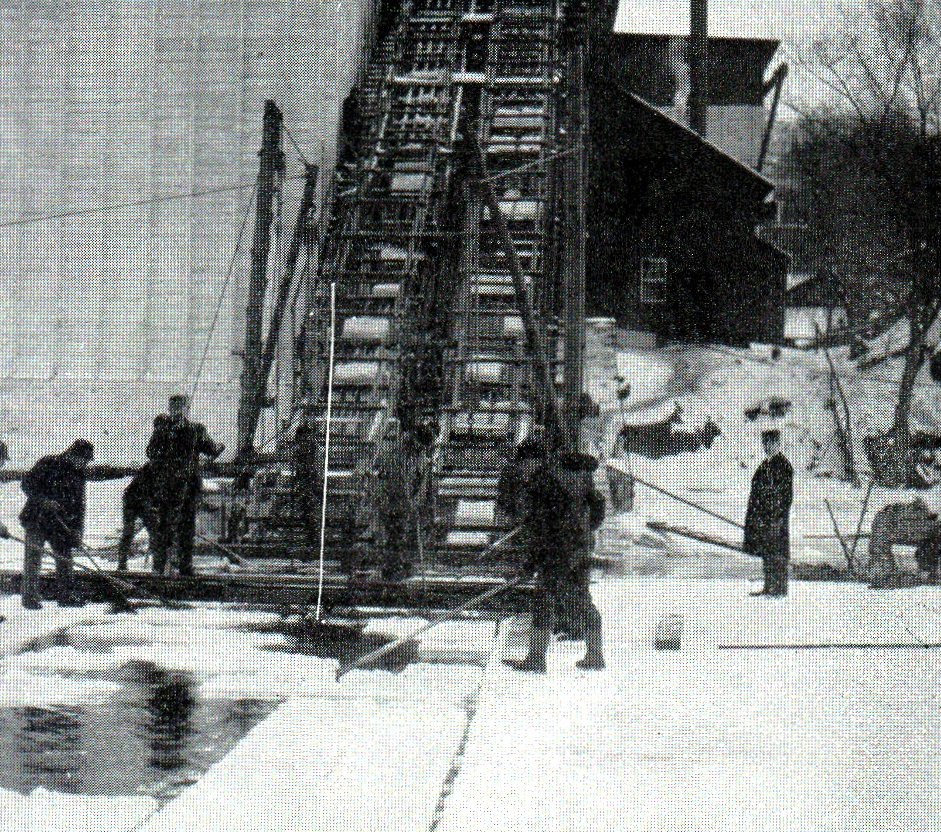
Ice elevators are special lifts that can work in very cold places. They’re used in buildings like cold storage warehouses and ice rinks.
These elevators are built to keep working even when it’s cold.
Ice elevators allow people to move things up and down in cold buildings, making work in these places much easier and faster.
| Model | Invented Date/Year |
|---|---|
| Early Ice Elevators | 1940s |
| Modern Ice Elevators | 1990s |
16. Ice Sleigh

Ice sleighs have long been used to move people and things over snow and ice. In the past, animals like horses or dogs often pulled them.
People still use ice sleighs today, but often for fun activities like sledding.
Modern ice sleighs are also used in some winter sports. They’re a fun way to enjoy snowy weather and are popular in many cold places worldwide.
| Model | Invented Date/Year |
|---|---|
| Early Ice Sleighs | 1600s |
| Modern Ice Sleighs | 1900s |
17. Imitation Marble

Imitation marble is made to look like real marble, but it’s cheaper and easier to work with. It’s made by mixing different materials to get the look of marble.
This fake marble is used extensively in building and decorating. It gives people a nice marble look without spending as much money.
Imitation marble is used in countertops, floors, and wall panels.
| Model | Invented Date/Year |
|---|---|
| Early Imitation Marble | 1800s |
| Modern Imitation Marble | 1950s |
18. Inclined Wheel

The inclined horse wheel was a tool for moving heavy things up slopes. It was like a big wheel that horses could turn to lift objects or move vehicles up hills.
This invention made it easier to transport goods in hilly areas. It was an important step in making transportation more efficient before engines were invented.
| Model | Invented Date/Year |
|---|---|
| Early Inclined Wheels | 1800s |
| Modern Inclined Wheels | 1900s |
19. Iron Gutter

Iron gutters are channels made to collect and move rainwater away from buildings.
Iron gutters protect buildings from water damage and help keep foundations dry and strong. They play a big part in managing water in cities and towns.
They prevent rain from pooling around buildings or streets, helping prevent flooding and keeping our roads and sidewalks safer.
| Model | Invented Date/Year |
|---|---|
| Early Iron Gutters | 1800s |
| Modern Iron Gutters | 1900s |
20. Indicating Telegraph
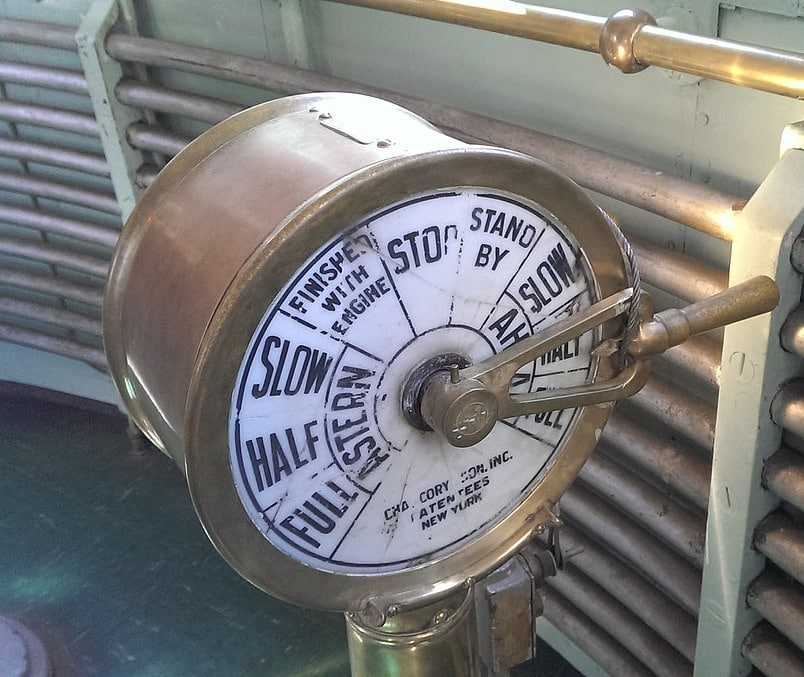
The indicating telegraph was a big step forward in communication. It used visual signals to send messages over long distances.
This device used electrical circuits to move mechanical indicators, showing letters or numbers.
This invention changed how people shared information in the 1800s. It made sending messages much faster and easier than before.
The telegraph helped armies communicate better during wars and made it easier for businesses to work across long distances.
| Model | Invented Date/Year |
|---|---|
| Early Indicating Telegraph | 1837 |
| Modern Indicating Telegraph | 1860s |
21. Induction Telegraph System
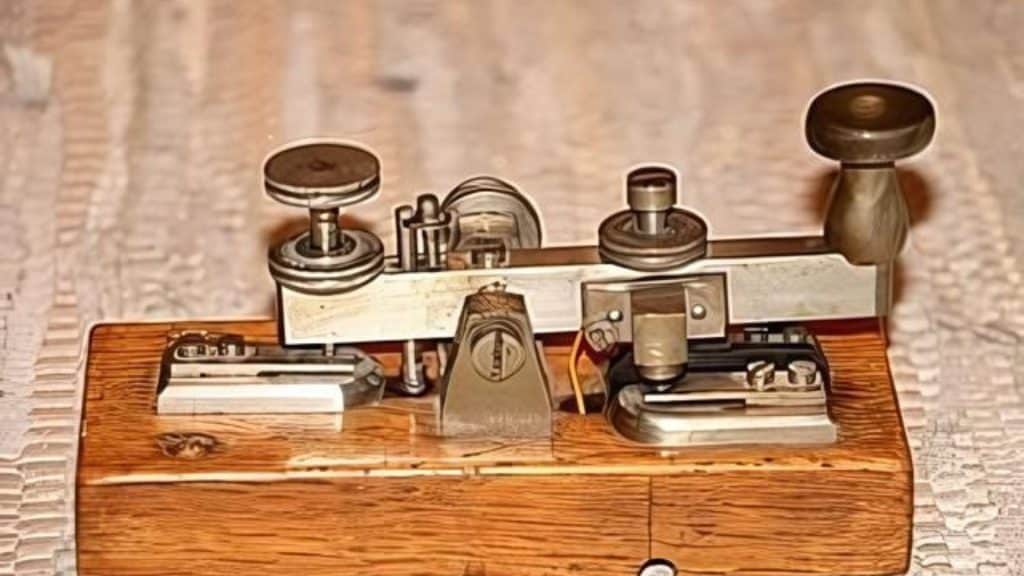
The induction telegraph system improved earlier telegraphs by using electromagnetic induction to send signals.
This allowed it to work without direct wire connections over longer distances.
This system made long-distance communication faster and more reliable, enabling messages to travel further.
It was crucial for connecting different parts of the world.
| Model | Invented Date/Year |
|---|---|
| Early Induction Telegraph | 1850s |
| Modern Induction Telegraph | 1900s |
22. Inhaling Apparatus
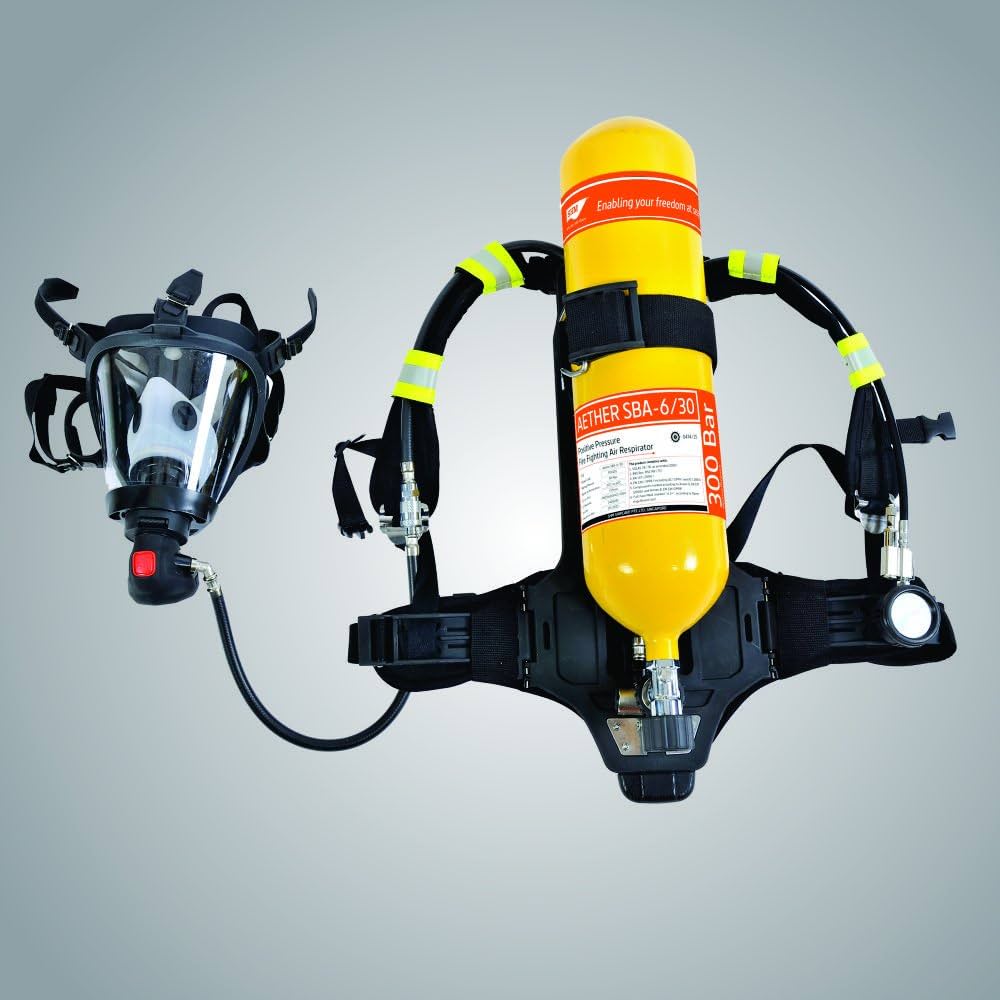
Inhaling devices help people who have trouble breathing. They send medicine straight to the lungs, which can quickly improve someone’s condition.
These devices have improved over time. We started with simple inhalers and now have advanced machines like nebulizers.
These tools have made a big difference in treating breathing problems.
Today, inhaling devices are key in helping people with asthma, COPD, and other breathing issues. They’ve made it easier for many people to manage their health and live comfortably.
| Model | Invented Date/Year |
|---|---|
| Early Inhalers | 1860s |
| Modern Nebulizers | 1960s |
23. Inking Apparatus for Card Printing Presses

The inking apparatus for card printing presses ensures that ink is applied evenly. This is important for making good, easy-to-read cards.
At first, people had to apply ink by hand. Now, machines do this job automatically. This change has made printing faster and more accurate.
These devices are still important today. They help make all sorts of cards, from business cards to playing cards, look professional and high-quality.
| Model | Invented Date/Year |
|---|---|
| Early Inking Apparatus | 1800s |
| Modern Inking Apparatus | 1950s |
24. Insect Bar for Bed

Insect bars for beds keep bugs away while people sleep. They form a barrier that insects can’t get through, which is especially useful in places with many bugs.
These bars are more than just for comfort. They help stop the spread of diseases that insects can carry.
In many warm parts of the world, insect bars are a common and important part of beds.
Using insect bars means people can sleep better without worrying about bug bites. This simple invention has made a big difference in health and comfort for many people.
| Model | Invented Date/Year |
|---|---|
| Early Insect Bars | 1800s |
| Modern Insect Bars | 1900s |
25. Insect Powder Ejector

Insect powder ejectors spread the insect-killing powder in a controlled way. They’re used on farms, in homes, and by pest control workers.
These tools make it easier to deal with insect problems. They spread the powder evenly and keep people from touching it directly, which makes using insecticides safer.
Insect powder ejectors are important tools in managing insect populations. They have helped farmers protect their crops, and homeowners keep their houses free of pests.
| Model | Invented Date/Year |
|---|---|
| Early Powder Ejectors | 1900s |
| Modern Powder Ejectors | 1950s |
26. Insulator

Insulators are materials that don’t let electricity pass through easily. They come in different types, like porcelain, glass, and newer materials called polymers.
Each type is good for different uses and amounts of electricity. Insulators are very important for keeping electrical systems safe.
They prevent electricity from going where it shouldn’t, preventing accidents and fires.
In power systems, insulators help ensure electricity gets to homes and businesses safely and efficiently.
| Model | Invented Date/Year |
|---|---|
| Porcelain Insulator | 1890s |
| Glass Insulator | 1920s |
| Polymer Insulator | 1960s |
27. Invalid Bedstead
Invalid bedsteads are special beds for people who are sick or cannot move easily. They can be adjusted in different ways, like changing height or angle.
They often have rails on the sides to keep people safe. These beds make it easier to care for people who are ill or injured.
They also help prevent problems like bedsores, which can happen when someone stays in one position for too long.
Today, invalid bedsteads are commonly used in hospitals and nursing homes. They’ve made a big difference in patient care, making patients more comfortable and helping caregivers do their jobs better.
| Model | Invented Date/Year |
|---|---|
| Early Invalid Bedsteads | 1800s |
| Modern Invalid Bedsteads | 1900s |
28. Iron Mantel

An iron mantel is a decorative frame that surrounds a fireplace. Cast iron mantels are often used to add a classic look to rooms.
They’re not just for show—they also help keep the area around the fireplace safe from heat.
Iron mantels have been popular for a long time because they look good and last long. They can make a simple fireplace look more special and add character to a room.
| Model | Invented Date/Year |
|---|---|
| Early Iron Mantels | 1800s |
| Modern Iron Mantels | 1900s |
29. Iron Railing
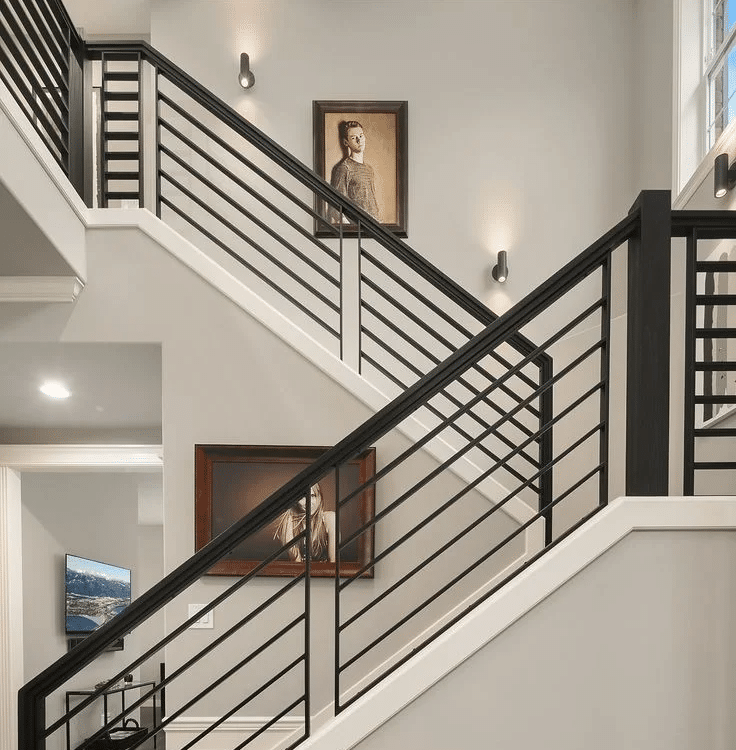
Iron railings are used in many places, such as balconies, stairs, fences, and public buildings.
They’re important for safety because they prevent people from falling and provide support.
These railings make buildings and public spaces safer and easier to use. They’re strong enough to hold people’s weight and can last long, even outside.
| Model | Invented Date/Year |
|---|---|
| Early Iron Railings | 1700s |
| Modern Iron Railings | 1900s |
Conclusion
As we wrap up our journey through “I” inventions, it’s clear how these creations have shaped our world.
Each invention has left its mark, from ice-breaking boats opening new sea routes to ice cream freezers bringing joy to our kitchens.
These tools and devices have made our lives easier, safer, and more comfortable. Looking at these inventions, we see how simple ideas can lead to big changes.
They remind us that innovation often comes from solving everyday problems.

